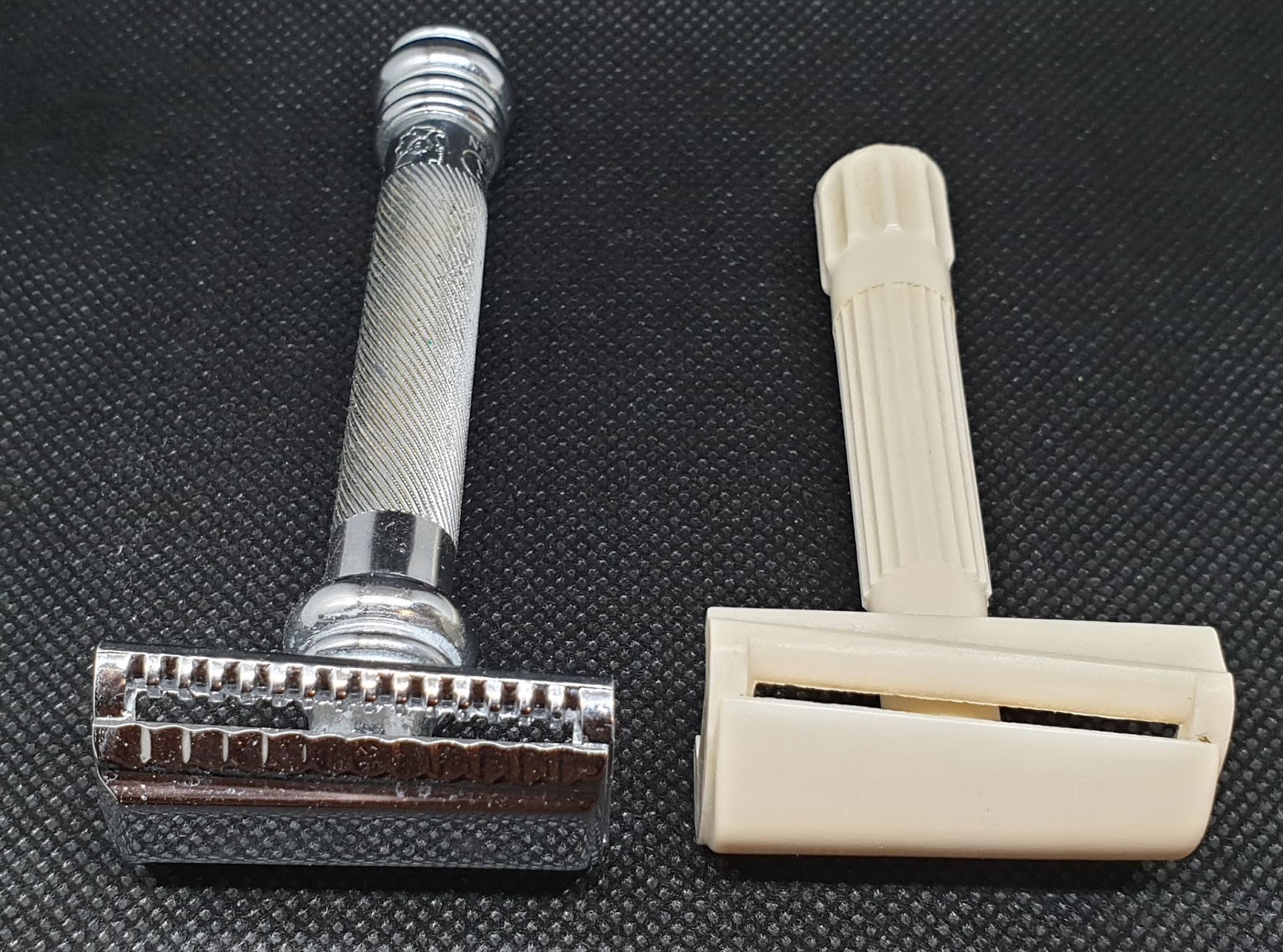Lets face it; safety razors can be confusing for those new to traditional shaving, and to old hands too. Some of us can instantly imagine what a three piece open comb double edge razor would look like, but others might feel a bit more lost in the jargon. So lets walk through part of my razor rotation and collection and highlight at least some of the common terms.
Safety bar, open comb, scallops and more
While it’s tempting to claim you can either have a safety bar or an open comb (OC) – like the original Gillette Old Type – but in reality there are a number of razors straddling the line with scallops. My Phillips Philite is a good example of one that do just that, with it’s deep scallops that let lather run through the head of the razor. Some OC razors continue the comb on the top cap, but to my mind this has more to do with aesthetics and not with function.


One, two and three piece razors
Basically this describe how many pieces the razors breaks down into when you open it it. Once piece razors are also commonly refered to as Twist To Open (or TTO for short) or butterfly razors, but at least one one piece razor – the Segal – had a different solution and required special blades that are no longer easily available. So called injectors is another case of one piece razors requiring a special blade, but luckily injector blades are easy to find.

Slants
Some razors are simply twisted… and are commonly referred to as slants and are considered aggressive razors overall. There are benefits to a slant; for starters they cuts the stubble easier due to hitting it at an oblique angle. Another benefit is that a twisted blade will be slightly stiffer than the same blade in a normal safety razor. Slants can also be fun, especially if you got a weekends worth of stubble to mow down. The twist can be slight or greater, as can be seen comparing my Merkur 39C and my old Bakelite slant that I bought as new old stock (NOS).

Adjustable and non-adjustable
Some razors lets the shaver adjust the aggressiveness on the fly, while others have a fixed blade gap and angle set once and for all. While the added utility can be nice to have, it do make the razor mechanically more complex and drives the cost up in addition to making the head thicker to contain the mechanism. A few modern three piece razors offers several base plates so the shaver can adjust the shave without the added complexity, but those cannot be adjusted on the fly like a traditional adjustable can.

Single vs double edge
If you say “safety razor” to most people, they will instantly think of a double edged – or DE for short – razor. But single edged razors (SE) is a thing too, and they come in all the different variations listed above as well. One thing to keep in mind is that while there is – at least these days – only one standard for double edged razor blades, there is several different and non-compatible blades for SE razors. In my rotation I have a few SEs; three that uses GEM blades and one injector razor.

Steel, brass, zamak, potmetal, bakelite, plastic…
Safety razor can be made from almost any material, from titanium down to wood… and to some extent the choice of material affects the feel of the shave and the hole left in your wallet after buying one. High end razors these days are often made from hard, durable materials such as stainless steel and titanium, while zamak has gotten an undeserved bad reputation in my opinion. And while I do try to limit my consumption of plastic thee days, there is nothing inherently wrong with plastic as a material for an inexpensive safety razor; it does what it needs to do and is affordable,
The wood razor I referred to? That was the Welch’s Saratoga, also known as the E-KON-I-ME and was a pre-plastic disposable.

Hopefully that was informative and helps clear things up for those who were unsure of the terminology.. if I missed out on something, please let me know.
